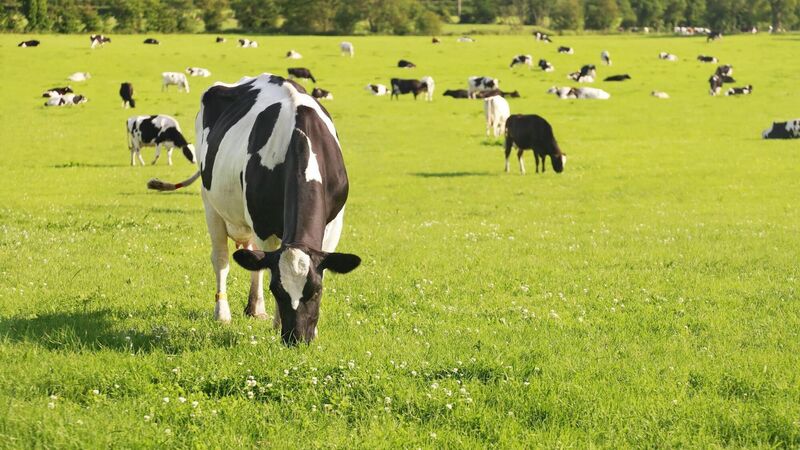Irish farms produce enough protein for 30 million people

Dairy farmers made further progress in the transition to lower-emissions chemical fertiliser in 2024, with 40% of the total nitrogen applied in 2024 in the form of protected urea.
Greenhouse gas emissions fell across the average dairy, cattle and sheep farm last year, a report into Irish farm sustainability published this week has revealed.
The 2024 Teagasc Sustainability Report uses the Teagasc National Farm Survey (NFS) to track the progress of Irish dairy, cattle, sheep and tillage farms in improving their economic, environmental and social sustainability.
It found lower stocking rates contributed to lower animal-related GHG emissions, which was sufficient to offset the higher GHG emissions associated with an increase in the use of chemical nitrogen fertiliser. Ammonia emissions were also down.
Dairy farmers also made further progress in the transition to lower-emissions chemical fertiliser in 2024, with 40% of the total nitrogen applied in 2024 in the form of protected urea. However, its usage remains low on dry stock farms, accounting for between 9% and 14% in the beef and sheep sector.
Two new social sustainability indicators developed by Marie Merlo, of the Teagasc Rural Economy and Development Programme, are included in the report. These indicators are measures of food security and assess the protein generated across the different farm systems.
Results indicate the average dairy farm generates enough protein per hectare to meet the yearly requirement of 20 people, while the corresponding figures for the average tillage, cattle and sheep farm are 15, four and three, respectively.
Collectively, farms generate enough protein to meet the requirements of about 36 million people. Even when allowance is made for the protein in animal feed, these systems collectively provide protein provision to meet the requirements of 30 million people.













